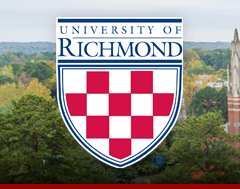Abstract
This Article proposes implementing a multitier patent system by the creation of two additional "roads" or routes that a patent application may follow. Because many patents are not sought with the intention of pursuing the traditional patent reward of commercialization or profit through access control, that is, the exercise of the limited patent monopoly, there is no reason for every single application to follow the current route. The creation of an auxiliary, or "side road," would decrease crowding on the current patent grant highway while still allowing the nontraditional applications to enter and traverse the patent grant system with different points of access. At the other end of the spectrum, there are patent applications that would derive more benefit through expediency in the patent grant system. For those applications, this Article proposes the creation of express lanes through the patent grant system. These two additional routes, used in conjunction with the current patent grant highway, would arguably decrease crowding, thus allowing for quicker patent grants as well as more careful analysis by the Patent Office and fewer bad patents. Because the proposed system considers the applicant's intended use for the patent,9 whether for the traditional patent reward of exclusion or otherwise, the patent grant highway is further modified to address the unique needs ofthe applications. These additional modifications may further decrease the traffic congestion. The expected outcome of the implementation of this proposed multitier patent grant system would be improved quality of issued patents as well as decreased time from application filing to patent grant.
Part II of this Article discusses the notion of nontraditional patent usage by considering the inventor's intent as well as externalities, such as market realities, that shape how a patent will be used. It also elaborates on the problems of patent quality and speed of issuance alluded to above. Part III then presents a model for categorizing patent applications into three types, based on inventor intent and market realities as understood at the time the application is filed. Part III also identifies the peculiar requirements of each of the three proposed categories of patent applications, considers how the current patent grant system fails to meet these needs, and further, analyzes how these failures affect the speed and quality metrics of the current patent grant system. Part IV proposes a multitier patent system that uniquely addresses each application type described in Part III and discusses how such a multitier system meets the unique needs of each application type as well as leads to overall improvement in patent quality and speed of issuance. Finally, Part V reviews and compares multitier patent systems in existence internationally as well as proposals for multitier patent systems raised by commentators. It further answers why the multitiered patent system proposed in this Article does not suffer the same criticisms as have been proffered for other multitiered patent systems.
Document Type
Article
Publication Date
2005
Recommended Citation
Kristen Osenga, Entrance Ramps, Tolls, and Express Lanes – Proposals for Decreasing Traffic Congestion in the Patent Office, 33 Fla. St. U. L. Rev. 119 (2005).
